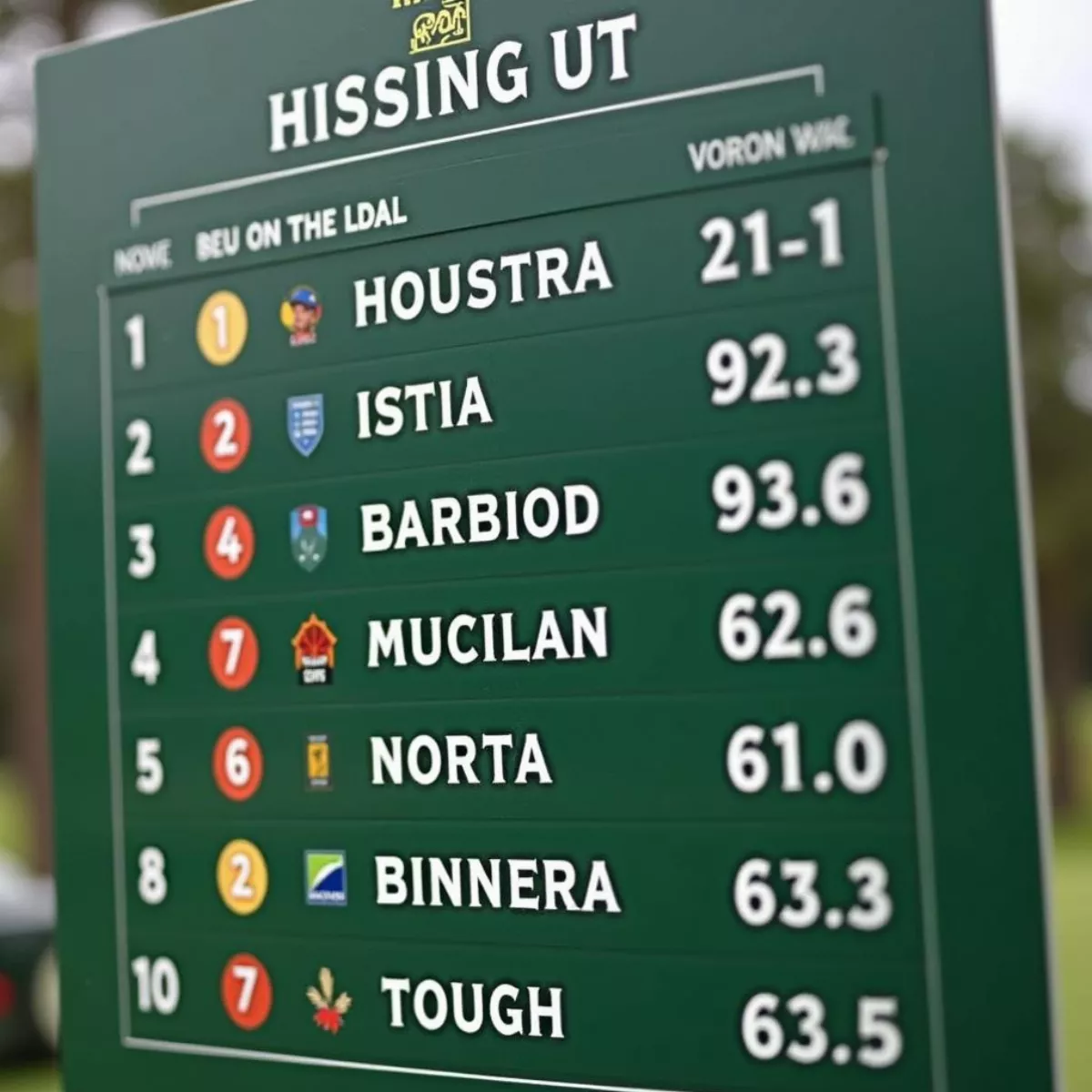Moving Day at the Masters is an anticipated event for golf enthusiasts and casual fans alike. As the third round of the prestigious tournament, it is a day filled with excitement, tension, and thrilling performances on the historic Augusta National Golf Club course. In this guide, we’ll dive into the intricacies of Moving Day, its significance, and what to expect as the tournament unfolds.
What is Moving Day?
Moving Day refers to the third round of a four-day golf tournament, particularly the Masters. The term signifies a crucial opportunity for players to move up the leaderboard. By performing well on this day, competitors can set themselves up for a solid position heading into the final round. Here’s a quick breakdown of how this day fits into the Masters Tournament:
- Round 1: Players establish their baseline scores.
- Round 2: The cut is made, determining which players will compete over the weekend.
- Round 3 (Moving Day): Players need to impress; this is where many bold moves happen.
- Round 4: The championship round, where the winner is determined.
Why is Moving Day Important?
Moving Day is particularly significant in the Masters for several reasons:
- Leaderboards Shift: Positions can change drastically due to a single strong performance.
- Pressure Mounts: The players feel the pressure as the day unfolds, making it more thrilling for spectators.
- Momentum Build-Up: A good score can build momentum, not just for that day, but also for the championship round.
The Strategy of Moving Day
Players approach Moving Day with specific strategies in mind. Here are some common tactics:
- Aggressive Play: Many golfers take risks, going for birdies to gain as many shots as possible.
- Mental Toughness: Players must maintain their focus and composure, especially if they experience setbacks.
- Course Management: Understanding the layout of Augusta National to navigate its challenging holes efficiently.
 Masters Tournament Leaderboard on Moving Day
Masters Tournament Leaderboard on Moving Day
Challenges on Moving Day
The pressure on Moving Day can’t be understated. Here are some challenges players face:
- Course Conditions: Weather changes can affect the course’s playability.
- Fan Influence: The energy of the crowd can motivate or intimidate players.
- Fatigue: By the time Moving Day arrives, players may feel worn down, which can influence performance.
Memorable Moments from Past Moving Days
Several iconic performances on Moving Day have etched themselves into the history of the Masters. Here are a few highlights:
- Tiger Woods (2001): Woods shot a stunning 65, propelling himself into the lead en route to his fourth green jacket.
- Phil Mickelson (2004): A thrilling performance on Moving Day saw Lefty shoot a 67, igniting his road to victory the following day.
- Rory McIlroy (2011): McIlroy delivered an impressive 66; however, his earlier struggles prevented him from winning that year.
These moments showcase the stakes and intensity of Moving Day, proving that it can alter the course of a tournament drastically.
 Tiger Woods Celebrates on Moving Day
Tiger Woods Celebrates on Moving Day
How to Experience Moving Day
If you’re lucky enough to attend the Masters or watch from home, there are various ways to fully appreciate Moving Day. Here are some tips:
- Arrive Early: Be there for the early tee times—sometimes the quietest parts of the course offer the best opportunities to catch your favorite players.
- Follow the Leaders: Keep an eye on the leaderboard; the players positioned near the top will be your focal point for excitement.
- Embrace the Atmosphere: The energy and intensity of Moving Day are contagious; soak it in!
Viewing Options
- Television: Tune in through ESPN or CBS for live coverage.
- Online Streaming: Options like Masters.com provide streaming services for live action and updates.
- Social Media: Follow the Masters on platforms like Twitter and Instagram for real-time highlights and news.
 Spectators Enjoying Moving Day at The Masters
Spectators Enjoying Moving Day at The Masters
Key Takeaways
- Moving Day is critical for players attempting to ascend the leaderboard during the Masters.
- Significant strategies and challenges come into play on this pivotal day.
- Iconic moments from past tournaments highlight the importance of Moving Day performances.
- Experiencing the atmosphere—whether on-site or through broadcasts—can greatly enhance your enjoyment of the event.
Frequently Asked Questions
1. What is Moving Day at the Masters?
- Moving Day refers to the third round of the Masters Tournament, where players attempt to improve their positions on the leaderboard.
2. Why is it called Moving Day?
- It’s called Moving Day because golfers have the opportunity to “move” up on the leaderboard with their performance.
3. How does Moving Day affect the final outcome of the Masters?
- A strong performance on Moving Day can set the stage for a player’s success in the final round.
4. What strategies do players use on Moving Day?
- Common strategies include aggressive play, strong mental focus, and effective course management.
5. Are there any famous moments from past Moving Days?
- Yes! Iconic moments include Tiger Woods’ 2001 performance and Rory McIlroy’s impressive 66 in 2011.
6. What should I do to prepare for watching Moving Day?
- Arrive early at the course, know the leaderboard, and embrace the high-energy atmosphere.
7. How can I watch Moving Day if I’m not at Augusta?
- You can watch it live on ESPN and CBS, stream it on the Masters.com website, or follow updates on social media.
8. Do course conditions vary on Moving Day?
- Yes, course conditions can change due to weather, affecting how players navigate Augusta National.
By familiarizing yourself with the key elements of Moving Day at the Masters, you can enhance your understanding and appreciation of this thrilling part of a beloved golf tradition. Enjoy the excitement and drama that each Moving Day brings!